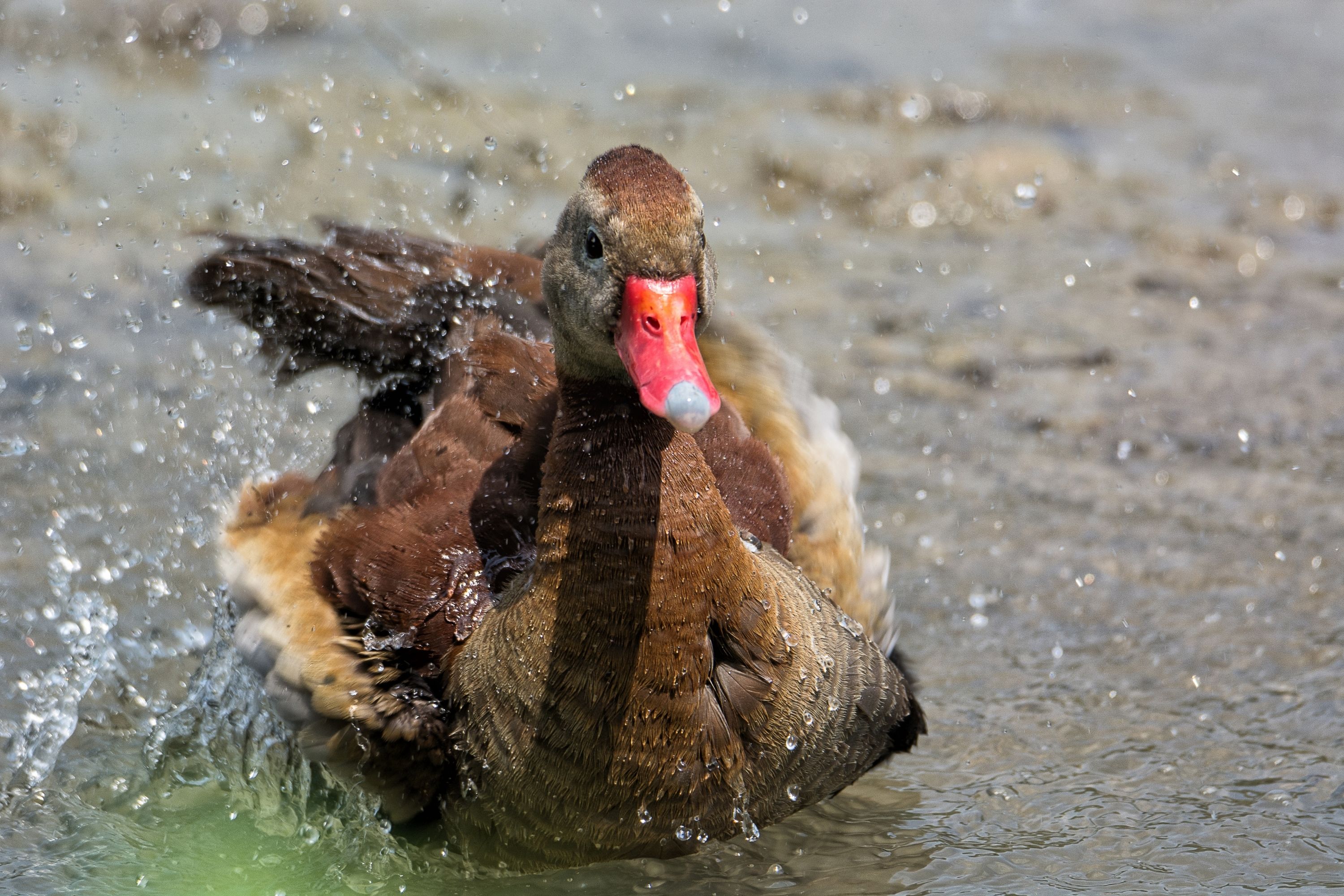Black-bellied whistling duck
(Dendrocygna autumnalis)

Description
The black-bellied whistling duck (Dendrocygna autumnalis), formerly called the black-bellied tree duck, is a whistling duck that breeds from the southernmost United States, Mexico, and tropical Central to south-central South America. In the US, it can be found year-round in peninsular Florida, parts of southeast Texas, coastal Alabama and Mississippi and seasonally in southeast Arizona, and Louisiana's Gulf Coast. It is a rare breeder in such disparate locations as Arkansas, Georgia, Tennessee, and South Carolina, though it is now a common breeder in parts of central Florida. There is a large population of several hundred that winter each year in Audubon Park in uptown New Orleans, Louisiana. Since it is one of only two whistling duck species native to North America, it is occasionally just known as the "whistling duck" or "Mexican squealer" in the southern USA. The black-bellied whistling duck is a mid-sized waterfowl species. Length ranges from 47 to 56 cm (19 to 22 in), body mass from 652 to 1,020 g (1.437 to 2.249 lb) and wingspan ranges from 76 to 94 cm (30 to 37 in). It has a long red bill, long head and longish legs, pale gray head and mostly gray-brown plumage. The belly and tail are black, and the body plumage, back of the neck and cap are a rich chestnut brown. The face and upper neck are gray, and they sport a thin but distinct white eye-ring. The extensive white in the wings is obvious in flight, less so on the ground; it is formed by the secondary remiges while the primaries are black; the wing-coverts are brown. Males and females look alike; juveniles are similar but have a gray bill and less contrasting belly. The wing bar is unique among whistling ducks. When on the ground, it may be hard to discern the light flanks present in many of these waterfowl. The fulvous whistling duck (D. bicolor) is the only sympatric whistling duck that shows such a whitish flank stripe, and it differs from the black-bellied by having dark wings and a lighter belly rather than the other way around. Juvenile D. autumnalis are quite similar to young of the white-faced whistling duck (D. viduata), which have a darker bill and no white wing patch; even when sitting they never seem to show white along the sides, as their thin white vertical barring on the black flanks is very indistinct. As the name implies, these are noisy birds with a clear whistling waa-chooo call.
Taxonomic tree:







